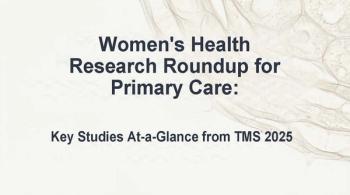
New Study Highlights Disparities in Diabetes Care between Urban, Rural Patients
New study found that patients living in urban areas were more likely to meet all aspects of key metrics of diabetes care.
Diabetes is among the most prevalent and deadly diseases in the US, affecting more than 11% of the population and responsible for more than 87 000 deaths in 2019. And while it’s long been known that people in rural areas are disproportionately affected by
A team of Mayo Clinic researchers analyzed health data of more than 45 000 Mayo patients with
To measure quality of care the researchers used a metric known as D5. Its component goals consist of zero tobacco use, hemoglobin A1C level at < 8%, blood pressure < 140/90 mm Hg, low-density lipoprotein (LDL) cholesterol level at goal or statin prescribed, and aspirin use consistent with clinical recommendations. They also collected outpatient, endocrinology, diabetes education, and nutrition visits for the year.
The results showed that 39.9% of rural patients attained all 5 goals, compared with 43.2% of urban patients. Among the various elements of the D5 metric, the largest difference was in LDL cholesterol level or statin prescribed, with 86.5% of urban residents meeting the goal vs 84.1% of rural residents,
Regardless of residence location women, older patients, and patients with less complexity had the highest odds of attaining all 5 goals. Patients were less likely to achieve all 5 if they had at least 1 diabetes education or endocrinology visit. The latter association, the authors say, is not surprising given that patients generally are referred to specialists when they aren’t meeting glycemic goals. They explain the lower frequency of care among rural residents by citing results of earlier studies suggesting that distance is a barrier to care, especially when the care is seen as routine.
The authors note that their study provides “a unique view into patient rurality and its impact on clinical outcomes,” since they were able to collect patient outcome and use data across an integrated health system. “This controlled analysis allows us to show that for rural patients, it is not their clinician or primary clinic that contributes to the [outcomes] disparity, but rather other aspects of rurality that contribute to differences in overall care delivery.”
Their study, they conclude, “highlights the need for further…trials of innovative health care delivery approached tailored to overcome the obstacle faced by our rural diabetic population.”
Reference: Foss R, Fischer K, Lampman MA, et al.
Newsletter
Enhance your clinical practice with the Patient Care newsletter, offering the latest evidence-based guidelines, diagnostic insights, and treatment strategies for primary care physicians.


















































































































































































































































































